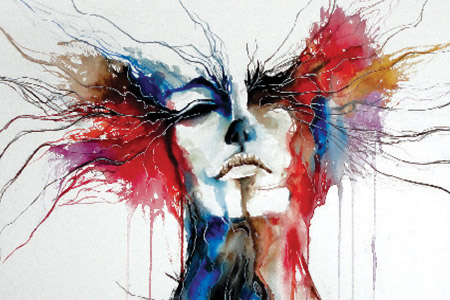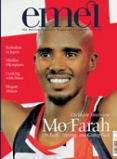
Kaleidoscope of Cultures
Issue 94 July 2012
Earlier this year as part of the Southbank Centre’s Alchemy Festival, Mica Gallery presented ‘The Brit Pak’, opening up a discussion on themes of culture and identity. Fatema Zehra profiles a selection of artists exhibited.
The East and the West have always had a contentious relationship, with Western perceptions of the region often being laced with negative undertones. For some countries in the region, this is now truer than ever, with regards to recent media coverage related to the ‘War on Terror’. Last month, as part of the Alchemy Festival at the Southbank Centre in London, Mica Gallery presented ‘The Brit Pak’. The exhibition offered the very best of emerging contemporary British Pakistani art and culture, exploring an area that has soared in recent times.
Much of the evolved growth has been in response to the key political events in recent history. Many of the issues flagged up in the media with relation to Pakistan have raised a whole host of issues that challenge Pakistani identity. One such narrative skilfully explored by this exhibition is ‘The Brit Pak versus Native Pak’ narrative, which as stated by the curator, Reedah El-Saie, “adds another layer of complexity to the creative and culture output both in Pakistan and Britain, at once in harmony yet polarised by finer cultural nuances, with an on-going frisson between culture, business and wider society”. Perfectly timed with Alchemy, the Southbank Centre’s annual festival to celebrate the art and culture influenced by or from India and South Asia, the exhibition brought new dialogue to the table.
The Brit Pak consisted of fifteen artists including new upcoming talents as well as more familiarly known names from the art scene. Four artists contributing very different styles to the narrative included Maaida Noor, Shafaq Ahmad, Zahir Rafiq and Khaver Idrees. Each of the artists exhibited at the show presents their own unique voice to the dialogue on culture and identity. Through their various mediums, they highlighted the complexities of human identity and the role of man in society wading through long histories of cultural expectations, as well as the changing face of these influences. Maaida Noor seeks to portray and evoke a positive feeling, whilst drawing from influences integral to her, such as the Qur’an and Hadith. Noor uses verses of Islamic scripture to help convey a true and affirmative message in her work in order to relate to and help question the viewer into considering their own thoughts and understandings. Her aim is to “invite contemplation and engage the viewer by identifying concerns about humanity, hope and our destiny and thus, by posing these questions; encourage dialogue with the work.”
Bookmark this |
|
Add to DIGG |
|
Add to del.icio.us |
|
Stumble this |
|
Share on Facebook |
|
Share this |
|
Send to a Friend |
|
Link to this |
|
Printer Friendly |
|
Print in plain text |
|


Comments
0 Comments